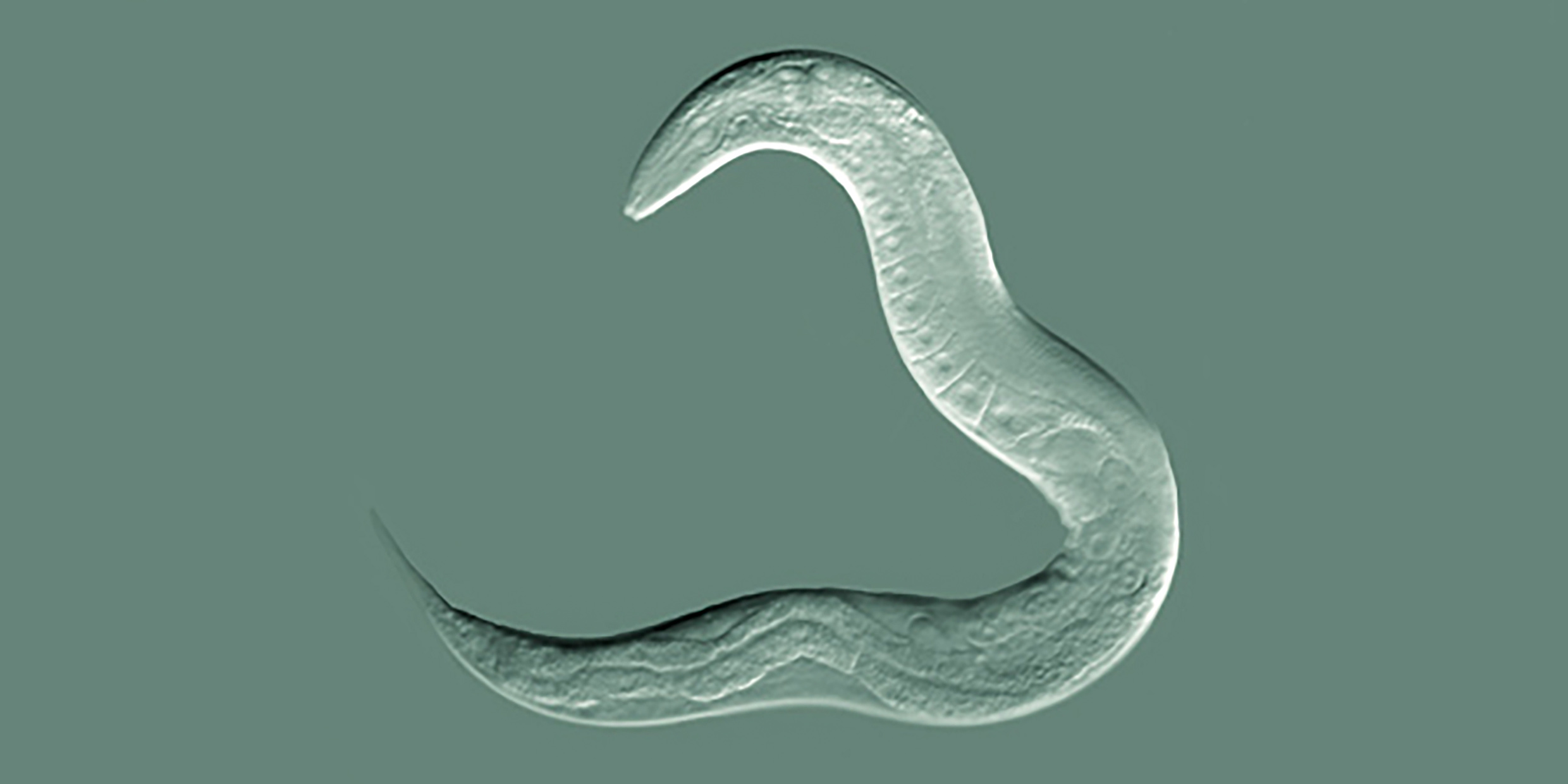Originally published 10 January 1994
An Irish proverb describes life this way: “Twenty years a‑growing. Twenty years in bloom. Twenty years fading. Twenty years a‑dying.”
The proverb is out of date. Modern medicine, diet, and life styles have made it more like this: Twenty years a‑growing. Forty years in bloom. Fifteen years fading. Five years a‑dying.
But hold on. The day may not be far off when we can say: Twenty years a‑growing. One-hundred-sixty years in bloom. Fifteen years fading. Five years a‑dying.
This is not idle fantasy. Biologists might very well discover how to delay senescence, the physical decline that precedes death.
In fact, for one lucky (or unlucky) worm, the doubled lifetime is already here.
In a [1993] issue of the journal Nature, a group of California researchers announced a genetic mutation in the worm Caenorhabditis elegans that results in extended longevity. The worm’s average lifetime increased from 18 days to 42 days.
These long-living worms aren’t sitting out a prolonged old age in the vermicular equivalent of a rocking chair; they are active adult wrigglers.
Having fun. Producing offspring.
To the surprise of many biologists, a single gene triggers the changes leading to longevity. The gene is called DAF‑2.
Mind you, C. elegans is a simple beast with a relatively small number of genes, and drawing conclusions about a genetic basis of human senescence is wildly risky. Nevertheless, the daffy-gened worm is a pioneer of our bioengineered future, a new Methuselah pushing the frontiers of life-extending science.
C. elegans is a soil-living, bacteria-grazing nematode, a wee round-bodied thing about a millimeter long, related to familiar human parasites like pinworm, hookworm, and intestinal roundworm. It has a front end and a back end, a mouth, a gut, and an anus. And hermaphroditic sex organs; that is, single individuals produce both eggs and sperm. They don’t do much but wiggle, eat, and reproduce. Now, some of them have twice as much time to do it.
Mutated worms produce slightly fewer offspring than normal worms. One theory of aging postulates that the energy costs of reproduction shorten lifespan, and the California researchers wondered if the slight decrease in the brood size of mutated worms accounts for their longevity. To find out, they zapped the gonads of unmutated worms with a laser, putting an end to their fertility. These infertile worms lived no longer than usual. Apparently, fecundity has no effect upon how long a worm survives.
Conclusion: The mutated gene does indeed act as an on-off switch for postponing old age.
This is not the first time biologists have artificially extended the average lifespan of an animal. Several years ago, fruit flies were selectively bred to have lifespans roughly a third longer than normal, providing the first confirmation that senescence has genetic controls. Now, C. elegans sets a record in the longevity sweepstakes.
It is probably wrong to conclude from these experiments that there are such things as aging genes; that is, genes whose sole purpose is to cause senescence and death. Most biologists believe that aging happens because of accumulated damage and failure of the body’s cells. Certain genes may affect the rate at which damage occurs, or the rate at which the body can repair the damage, but their real purpose is almost certainly something else altogether.
Nevertheless, it may not be too early to start considering the ramifications of extended — perhaps even doubled — human lifespans. What at first blush might appear attractive becomes sobering upon reflection.
Consider, for example, buying holiday gifts for an exponentially-cascading mob of children, grandchildren, great-grandchildren, great-great-grandchildren, and great-great-great-grandchildren.
Think of the number of greeting cards to be bought, signed, licked, stamped and mailed to a burgeoning stream of progeny.
Think of the mid-life trauma of a one-hundredth birthday. Or worse, a one-hundred-and-fiftieth birthday.
Think of the kids saying, “Never trust anyone over a hundred.”
Think of the personal ads: “DWM, 130+, looks decades younger, seeks slim WF 20 – 30 for fun relationship, perhaps more.”
Or: “SBF, a sprightly 35, seeks mature, successful partner, 40 – 140.”
Think of having to listen to music that was written 175 years after you were born.
Think of…Oh, never mind. Be glad you’re not a worm. For C. elegans, the future is here.



